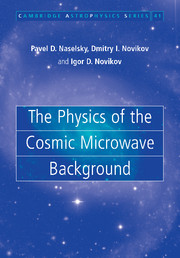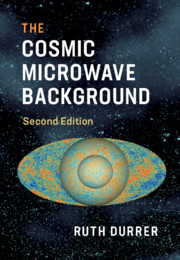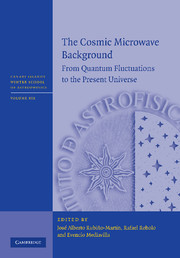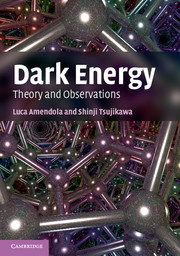The Physics of the Cosmic Microwave Background
Spectacular observational breakthroughs, particularly by the WMAP satellite, have led to a new epoch of CMB science long after its original discovery. Taking a physical approach, the authors of this volume probe the problem of the 'darkness' of the Universe: the origin and evolution of dark energy and matter in the cosmos. Starting with the observational background of modern cosmology, they provide an accessible review of this fascinating yet complex subject. Topics discussed include the kinetics of the electromagnetic radiation in the Universe, the ionization history of cosmic plamas, the origin of primordial perturbations in light of the inflation paradigm, and the formation of anisotropy and polarization of the CMB. This fascinating review will be valuable to advanced students and researchers in cosmology.
- Provides an accessible review of the physics of the CMB and the nature of dark matter and energy in the Universe
- Includes results of experiments, including the WMAP satellite, and looks ahead to the PLANCK mission
- Written by three leading experts of CMB with high international reputations
Reviews & endorsements
Besides having an excellent and clear description of how our current theories think stars are being born, this book has the most spectacular set of photographs I've seen collected in one book. The photographs are from virtually every major telescope on Earth and those that we have put into space. Further the photographs are in every frequenty from radio waves to x-rays.
This book is aimed at the casual, non-technical reader. It is 'math free.' But it still manages to convey the tremendous magnitude, majesty, and mysteries of the universe we can see. Its main subject is the birth of stars, and mostly within our own galaxy, the Milky Way. With the birth of the stars, there is also the death of stars. The book was published in 2006. That was back when Pluto was still a planet -- and that's OK with me, I still think of it as a planet in spite of how the vote went. In its discussion about planets around other stars, it is pretty up to date, but of course new ones are being discovered all the time.
Publisher Review
"This book will appeal to a broad, informed audience and is highly recommended for public and general academic libraries."
American Reference Books Annual
"The book is written in an informal, chatty, and largely approachable style, and is liberally sprinkled with some of the most beautiful images our subject as to offer.... the approachable style of the text means that the keen amateur will learn something of this subject; and the level of detail and rigorous explanation would also allow it to be used by students embarking on their first course in astronomy to get a good background overview before they become embroiled in the detailed mathematics of the subject. All in all the authors are to be congratulated on producing a very useful addition to the growing library of books on star formation."
Derek Ward-Thompson, The Observatory
Product details
August 2011Paperback
9781107403123
272 pages
244 × 170 × 14 mm
0.44kg
Available
Table of Contents
- Prefaces
- 1. Observational foundations
- 2. Kinetics of electromagnetic radiation
- 3. The ionization history of the Universe
- 4. Primordial cosmic background radiation and small perturbations of uniform cosmological model
- 5. Primary anisotropy of CMB
- 6. Primordial polarization of the cosmic microwave background
- 7. Statistical properties of random fields
- 8. The Wilkinson Microwave Anisotropy Probe (WMAP)
- 9. The 'Planktonian era' in the study of anisotropy and polarization of the CMB
- 10. Conclusion
- References
- Index.





